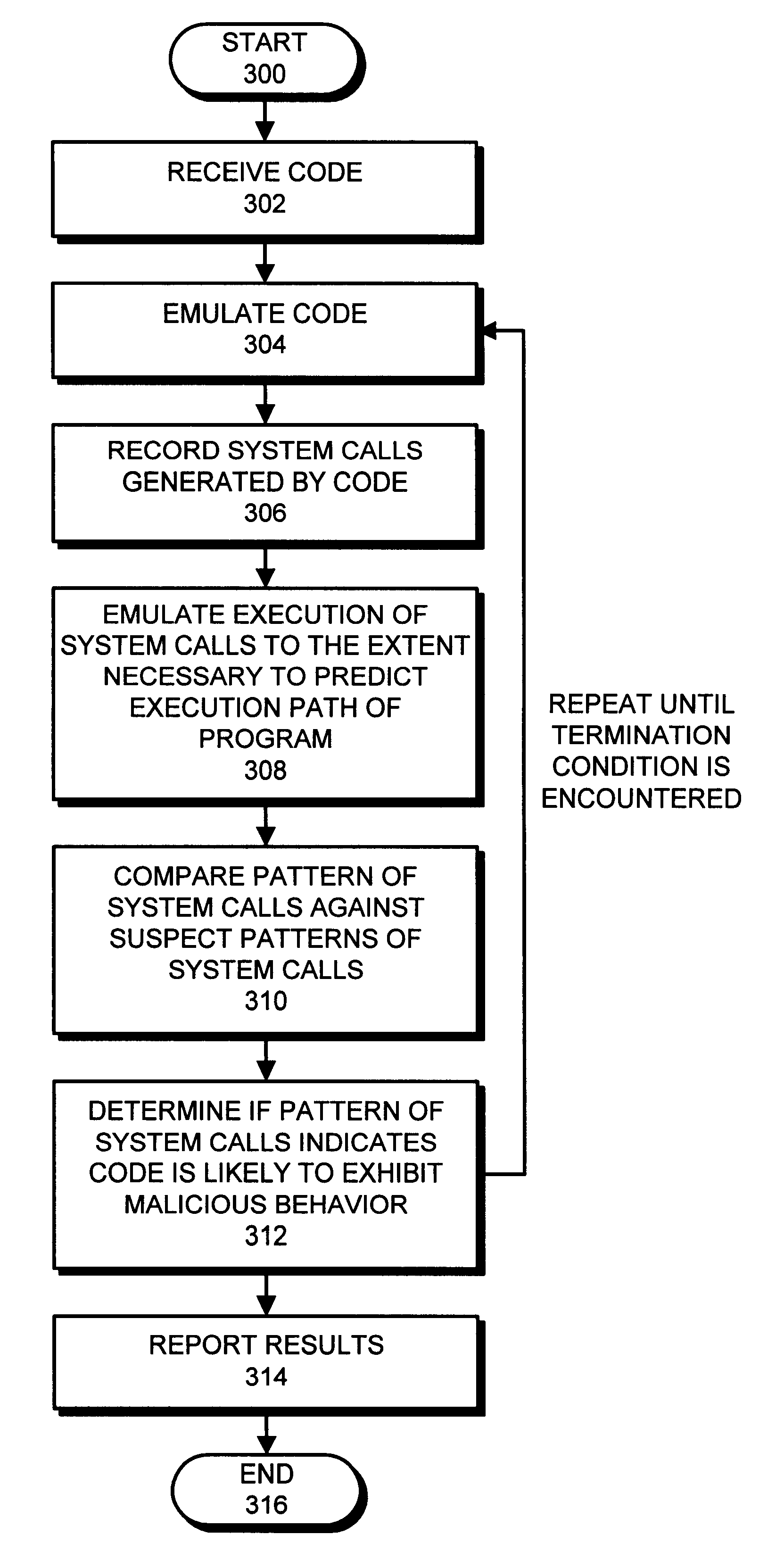Detecting malicious software by analyzing patterns of system calls generated during emulation
a technology of analyzing system calls and patterns, applied in the field of systems for detecting malicious computer software, can solve problems such as difficult to analyze these programs, software can compromise security, and damage the computer system
- Summary
- Abstract
- Description
- Claims
- Application Information
AI Technical Summary
Benefits of technology
Problems solved by technology
Method used
Image
Examples
Embodiment Construction
For example, suppose system calls generated by code 108 during emulation (1) modify the RunOnce registry key and (2) create a file (possibly a copy of code 108) which is launched every time the computer restarts. Also suppose (3) the system calls listen to a non-standard port. (This is an action commonly performed by network sniffers.)
None of these actions is enough on its own to indicate that the program is exhibiting suspicious behavior. However, if all of these actions are performed by a single piece of code 108, the piece of code 108 is very likely to be a backdoor program that provides a mechanism by which an intruder can break into computer system 106.
As an example, the profile of system calls that cause this behavior can be expressed as follows within database 206.
1. {system call to modify the registry key(s) responsible for launching applications at startup}
2. {wildcard--any number of intervening system calls}
3. {system call to write an executable file with a name used in st...
PUM
 Login to View More
Login to View More Abstract
Description
Claims
Application Information
 Login to View More
Login to View More - R&D
- Intellectual Property
- Life Sciences
- Materials
- Tech Scout
- Unparalleled Data Quality
- Higher Quality Content
- 60% Fewer Hallucinations
Browse by: Latest US Patents, China's latest patents, Technical Efficacy Thesaurus, Application Domain, Technology Topic, Popular Technical Reports.
© 2025 PatSnap. All rights reserved.Legal|Privacy policy|Modern Slavery Act Transparency Statement|Sitemap|About US| Contact US: help@patsnap.com



